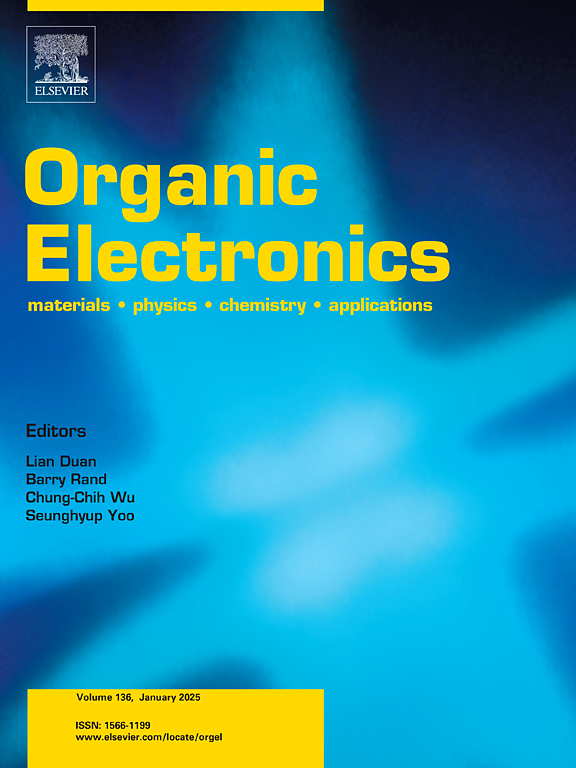Effect of Co-passivation on CsPbI2Br perovskite solar cells with increased photovoltaic efficiency
IF 2.6
4区 工程技术
Q3 MATERIALS SCIENCE, MULTIDISCIPLINARY
引用次数: 0
Abstract
All-inorganic perovskites CsPbI2Br have gained much research interest in photovoltaics due to their excellent thermal stability. However, all-inorganic perovskite solar cells (PSCs) are prone to form defective perovskite films, which are detrimental to their high power conversion efficiencies (PCEs). In this study, CsPbI2Br PSCs with improved PCEs have been developed by introducing 1-butyl-3-methylimidazolium tetrafluoroborate (BMIMBF4) and tris(2-aminoethyl)amine (TAEA) as co-passivators. It is shown that BMIMBF4 additive improves the quality of perovskite films with reduced defect density, enhanced device efficiency, and increased phase stability in ambient atmosphere. By using TAEA as a co-passivator, the non-radiative recombination of PSCs is further suppressed, which cannot be achieved by BMIMBF4 alone. Moreover, after treating the perovskite surface with TAEA, the activation energy for ion migration is increased. The decelerated ion migration in CsPbI2Br solar cells leads to the illusion of a larger hysteresis effect but results in a higher steady-state output efficiency. The steady-state PCE of the optimized CsPbI2Br solar cells increased from 7.2 % to 11.3 %.

共钝化对CsPbI2Br钙钛矿太阳能电池提高光伏效率的影响
全无机钙钛矿CsPbI2Br因其优异的热稳定性在光伏领域得到了广泛的研究。然而,全无机钙钛矿太阳能电池(PSCs)容易形成有缺陷的钙钛矿薄膜,这不利于其高功率转换效率(pce)。本研究通过引入1-丁基-3-甲基咪唑四氟硼酸盐(BMIMBF4)和三(2-氨基乙基)胺(TAEA)作为共钝化剂,制备了具有改进PCEs的CsPbI2Br PSCs。结果表明,BMIMBF4添加剂可以降低钙钛矿薄膜的缺陷密度,提高器件效率,提高环境气氛下的相稳定性。通过使用TAEA作为共钝化剂,进一步抑制了PSCs的非辐射重组,这是单独使用BMIMBF4无法实现的。此外,用TAEA处理钙钛矿表面后,离子迁移活化能提高。在CsPbI2Br太阳能电池中,离子迁移的减速导致了更大的滞后效应的错觉,但却带来了更高的稳态输出效率。优化后的CsPbI2Br太阳能电池的稳态PCE由7.2%提高到11.3%。
本文章由计算机程序翻译,如有差异,请以英文原文为准。
求助全文
约1分钟内获得全文
求助全文
来源期刊

Organic Electronics
工程技术-材料科学:综合
CiteScore
6.60
自引率
6.20%
发文量
238
审稿时长
44 days
期刊介绍:
Organic Electronics is a journal whose primary interdisciplinary focus is on materials and phenomena related to organic devices such as light emitting diodes, thin film transistors, photovoltaic cells, sensors, memories, etc.
Papers suitable for publication in this journal cover such topics as photoconductive and electronic properties of organic materials, thin film structures and characterization in the context of organic devices, charge and exciton transport, organic electronic and optoelectronic devices.
 求助内容:
求助内容: 应助结果提醒方式:
应助结果提醒方式:


